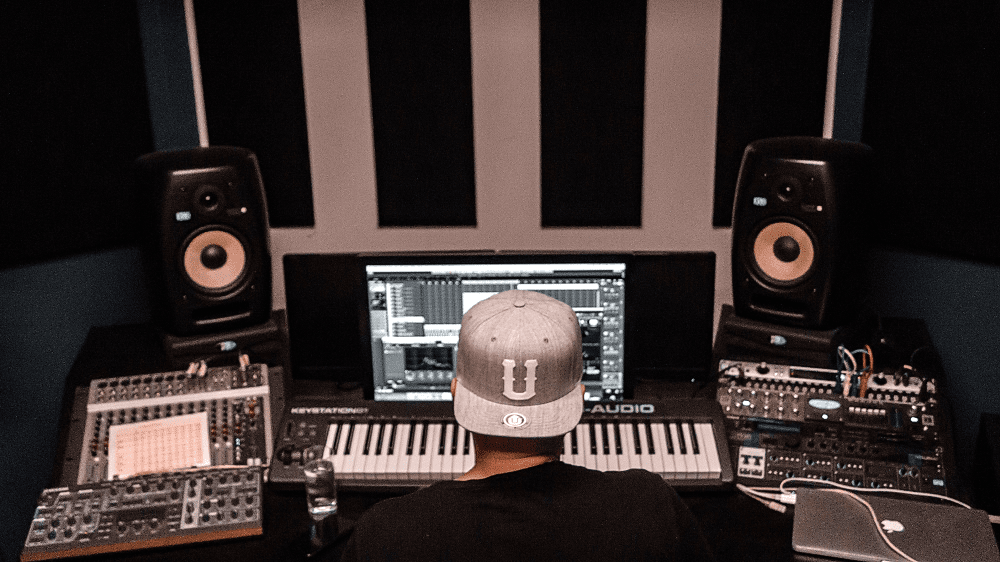
The best studio monitor is indispensable in every studio. Due to the crystal clear and unadulterated sound, you can detect every irregularity and your productions sound great through every speaker. If you want to take music production seriously, you can’t ignore these products!
To help you on your way, I have written an extensive buying guide where I have highlighted the most important specifications. Read on quick!
Best studio monitor buying guide: how to make the best buy?
What is a studio monitor?
To the layman, they look like PC speakers. An excellent choice for those looking for a tight sound, but among sound fanatics this is cursing in church. Studio monitors serve a different purpose.
A normal speaker, such as a bluetooth speaker, good WiFi speakers or a smart speaker, will reproduce a colored sound. Enhanced treble or bass; a full, round, or sharp sound.
The speaker is put together in such a way that its sound gets a certain character. This guarantees an excellent listening experience.
The goal of a studio monitor is to reproduce this sound as precisely and uncoloured as possible with an honest representation – which to the average person can sound flat or characterless.
Yet it is essential when mixing music. This way you can quickly detect irregularities and your music will sound great on any type of speaker.
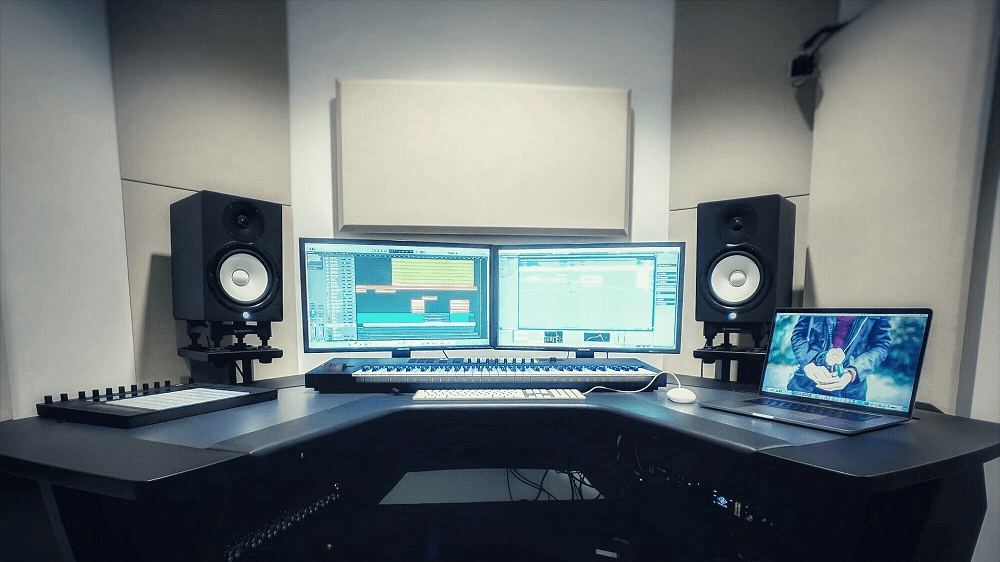
Active or passive?
An active monitor has a built-in amplifier. The monitor does not depend on an external amplifier and only needs to be connected to the mains. The advantage is that the internal amplifier is tuned to the speakers, so that they come into their own.
Also, you don’t have to spend time – and possess the knowledge – to choose a matching amplifier. They are more expensive compared to a passive monitor, but purchasing an external amplifier can in turn make a passive monitor more expensive.
A passive monitor does not have a built-in amplifier and relies on an external amplifier to come to life. They are lighter and more portable than their active siblings, but require an amp to match the specs. This requires some knowledge.
But if you have that knowledge, you can choose an amp yourself and get closer to the sound you want. Want the simplicity of all-in-one ? Then go for the active version.
If you do not intend to mix music on the assembly line, fortunately there are also the best active speakers and bookshelf speakers for the average consumer.
Two or three speakers?
2-way monitor
The most common variant you will encounter is the 2-way monitor. It has a tweeter and a woofer. These are the small and large speakers respectively.
The tweeter is responsible for the high frequencies, and the woofer for the mid and low frequencies.
Because they have two speakers, they are usually more compact than the 3-way monitor, which has three speakers.
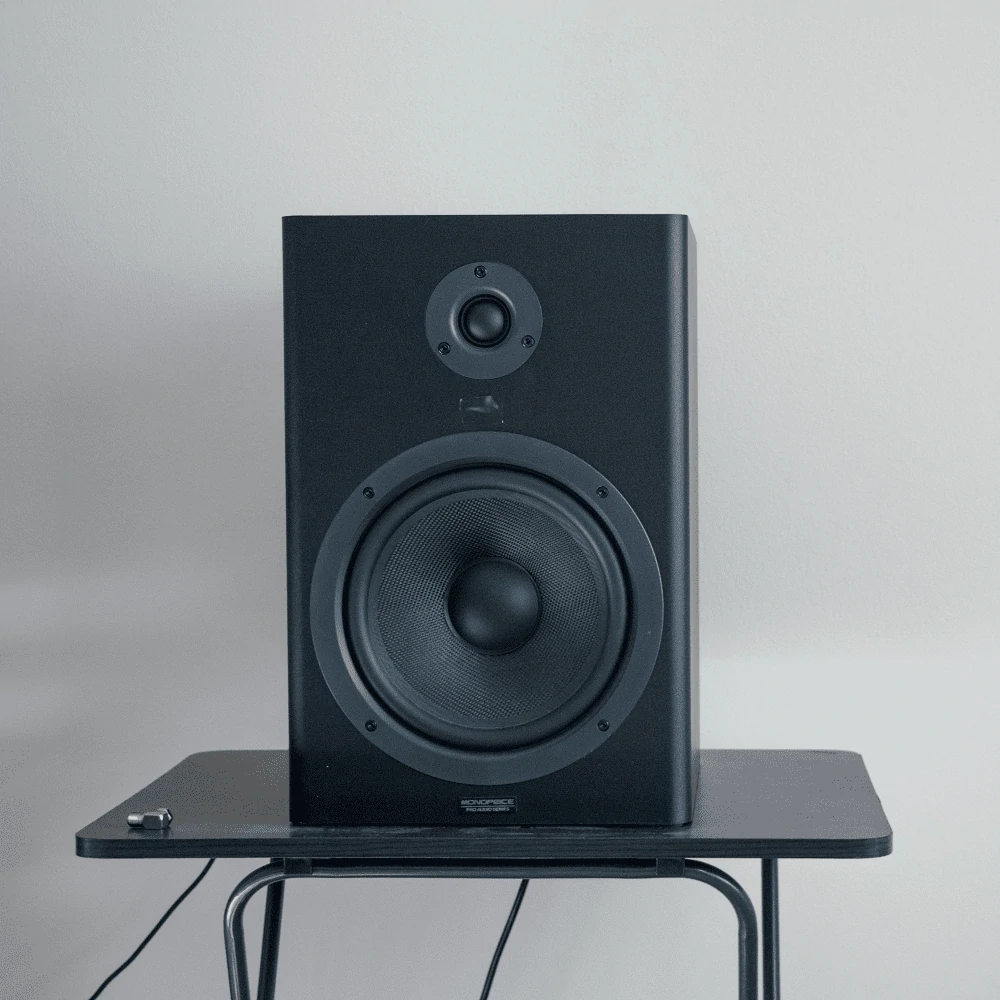
3-way monitor
A 3-way monitor has a tweeter , woofer and a center speaker. This speaker produces the middle frequencies, and the woofer produces the lowest frequencies.
A 3-way monitor sends the highest, middle and lowest tones to the correct speaker with crossover frequencies. This controls that the sound below a certain frequency is sent to the corresponding speaker.

On paper, the 3-way monitor seems to be the best choice. It has speakers that cover all three frequency ranges, and not like the 2-way, where the woofer produces the middle and lowest tones. In practice it is a lot more complex.
The success of the 3-way depends a lot on the setup of the crossover and how smoothly the frequencies are directed past each other. The goal is to get a smooth sound, where the speakers and the frequencies connect seamlessly. Control over this crossover by means of buttons or software is therefore also essential.
Is the 2-way or 3-way monitor better? The 3-way is significantly more expensive than the 2-way monitor. It requires more material and high-quality technology to make them function properly. And if you want high-quality crossovers, you will also feel this in your wallet.
A 2-way monitor still dominates the market and is suitable for mixing most types of music. Do you mix complex film scores where every detail counts? Then you will be served excellently with a high-quality 3-way.
How many inch speakers do you need?
The size of the speakers is usually indicated in inches and represents the size of the woofer. The size of the tweeters are usually 1 inch. These must produce the high frequencies and therefore be small to move quickly.
The size of your woofers is much more important. In general, the larger the woofer, the better and deeper the bass reproduction – but this depends on the build quality. The bigger the better? Not always!
First, look at the size of your space. Do you produce in your room, or a small home studio? Then 4 to 6 inches is usually sufficient. Do you have a larger space? Then consider 6 to 10 inch studio monitors.
Gigantic speakers may seem cool, but you soon notice that the sound, and especially the bass, is overwhelming for a room that is too small. Conversely, speakers that are too small for a large studio do not fill the space sufficiently and the sound sounds ‘small’ and thin.
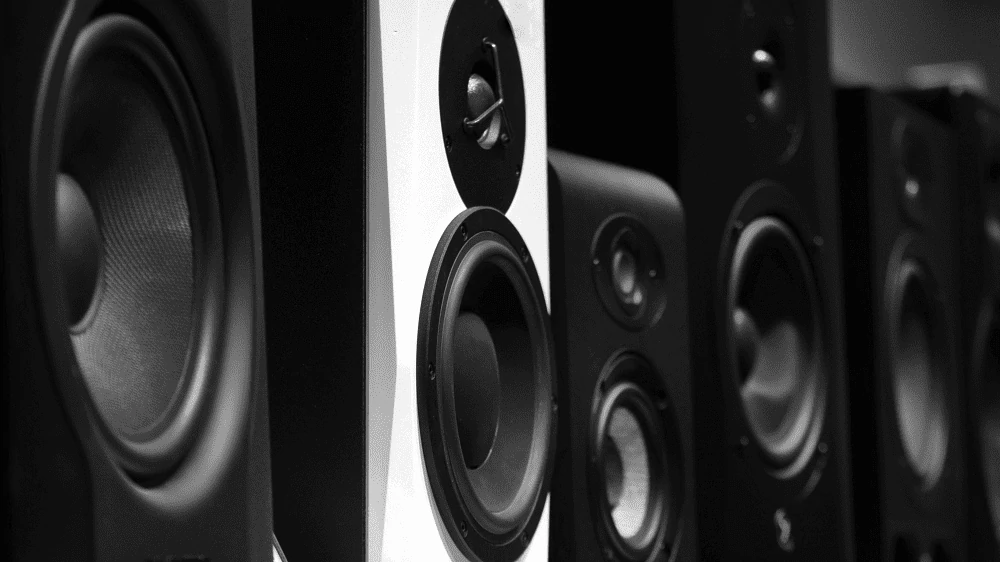
Near-field and mid-field monitors
Near-field monitors are specially designed to reproduce good sound over a short distance, about half a meter to a whole meter. This makes them ideal for placement on a desk in combination with a curved monitor.
They are also excellent at reproducing direct sound. Because the sound has to travel a short distance to the human ear, you have virtually no indirect sound due to reflections from walls or ceilings. They usually have a 2-way design with a woofer size of 4 to 6 inches.
Mid-field monitors are usually too overwhelming for small spaces and home studios, and work better in medium-sized studios. You usually see that they are 3-way monitors with a woofer size of 8 to 10 inches. In most cases, they produce better sound quality than near-field monitors.
However, the sound from the speakers has to travel a lot of distance before they come into their own. This makes them unsuitable for small spaces. In addition, much of the sound is reproduced by reflections from walls and ceilings. As a result, acoustic unevenness can disturb the quality of the sound.
Frequency response
The average person is able to perceive sounds between 20 Hz and 20 kHz (20,000 Hz). ‘Normal’ speakers are tuned to emphasize or cut certain frequencies within this range. We call this the frequency response.
This gives a type of speaker a certain character. Some speakers sound full and round, others clear and sharp. The sound is colored.
Studio monitors are the odd one out in that regard. They aim to reproduce a flat frequency response. This means that all sound within the frequency range has the same volume. They do not accentuate one frequency range more than another.
And that makes sense. After all, studio monitors are intended to reproduce the sound as honestly as possible, without enhancing certain tones and weakening others. You want to know how the music actually sounds in order to detect any irregularities, so that music sounds good over every type of speaker.
In practice, this frequency response is never completely flat, especially with the lower quality models, but every manufacturer strives for the most flat response possible.
Power
A studio monitor with more power – i.e. a higher wattage – will not only produce a louder sound, but also a more detailed reproduction over the entire frequency range. It can reproduce sound without distortions.
How much power do you need? The general rule states that 50 watts is a good starting point for a room or small home studio. A monitor with impressive power may sound great in a large room, but it will never deliver full sound in a small room.
💡 Give them breathing room
Even if you invest in quality studio monitors, they will never sound good if you don’t take the placement and acoustics of your room into account. Do not place them right against the wall, but let them ‘breathe’, take the size of your room into account and improve the acoustics if necessary.
Manufacturers usually provide useful instructions on how to best place their speakers. More expensive monitors now also have handy calibration software that makes corrections for the (poor) acoustics of your room.
Open or closed design?
The cabinet’s speakers come in two forms: an open or closed design.
An open design has a port on the front or back that creates an open connection to the inside of the speaker. This creates a low resonance which increases the range of the low tones and makes the bass ‘fatter’. The downside is that the bass can sound quite bombastic and the sound is less natural.
In a closed design, this port is not present and the woofer is held back by the air pressure. The bass is therefore less than with an open design, but the reproduction is usually a lot tighter and more defined.
Connection
Various types of connections exist for studio monitors. In most cases you will find this on the back.
In the more expensive segments of studio monitors, the intervention of an external sound card is required.
It costs a few bucks, but it significantly improves sound quality, beating an internal sound card with ease in most cases.
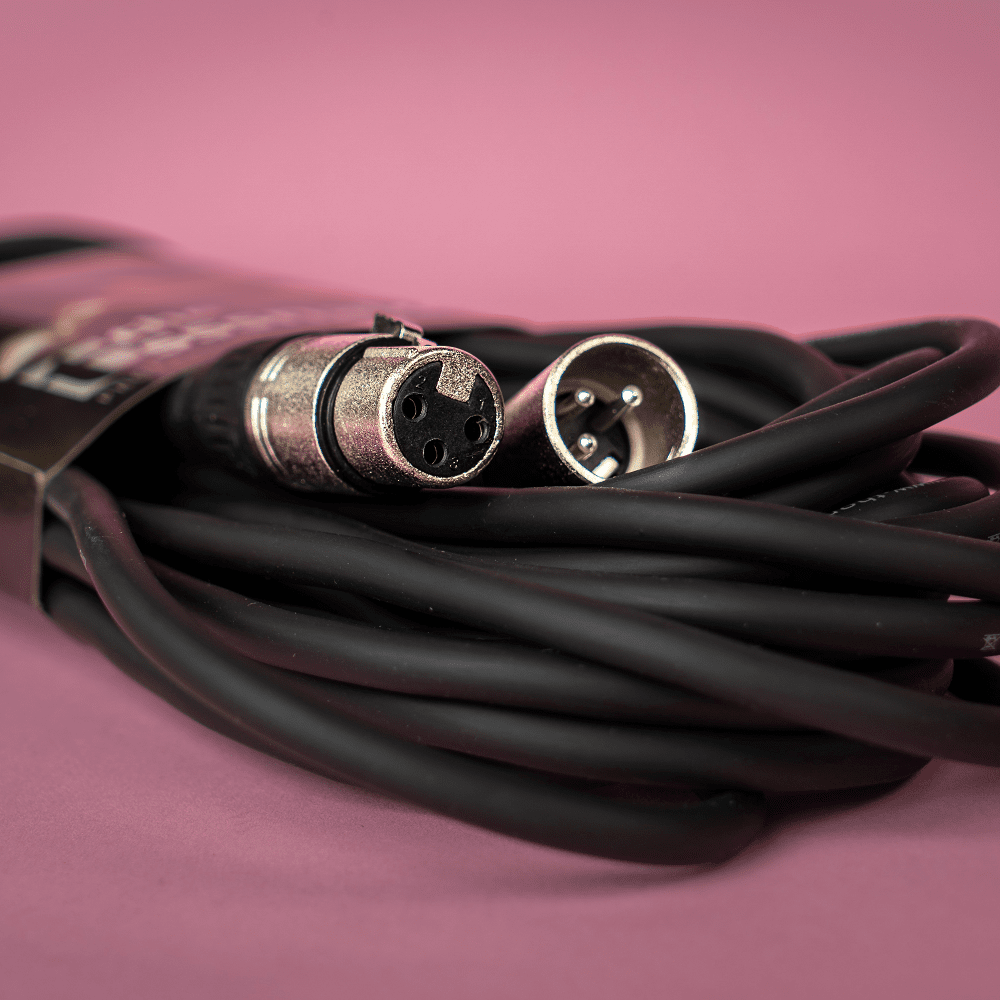
A distinction is also made between balanced and unbalanced connections. Simply put: a balanced connection is usually used with longer cable lengths and is more effective in preventing noise and hums than an unbalanced connection.
💡 Is your sound card balanced?
Check whether your external sound card has a balanced connection, otherwise it will act as an unbalanced connection.
- An XLR connection is a balanced connection and a popular variant because it is free of interference and noise.
- A 6.3mm/TRS plug is also a balanced connection and features a TRS plug which is basically the same as the thick connection of a pair of headphones.
- RCA, also known as the well-known RCA connection, can be recognized by the red and white plugs. This is an unbalanced connection. Fine for short cable lengths, but noise can occur at a distance of more than 5 meters.
- USB and 3.5 mm are handy because of their simplicity and you can connect directly to the computer. The intervention of an external sound card is not necessary, to the detriment of the sound quality.
Recommend the 5 best studio monitors in 2022
1. Studio monitor speakers
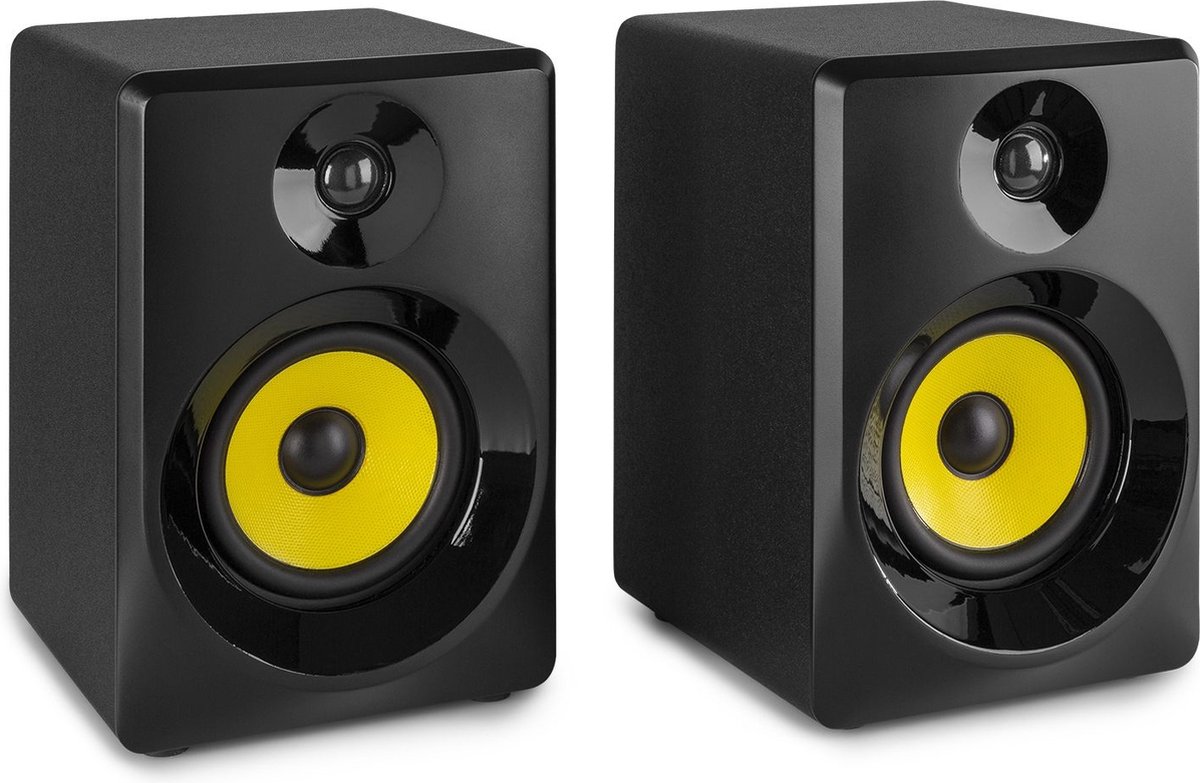
Minimum frequency: 80 Hz
Maximum frequency: 20,000 Hz
Tweeter Diameter: 1 inch
Built-in amplifier: With built-in amplifier (active)
Total output power: 100 W
Studio monitor type: 2-way
2. Studio monitor speakers
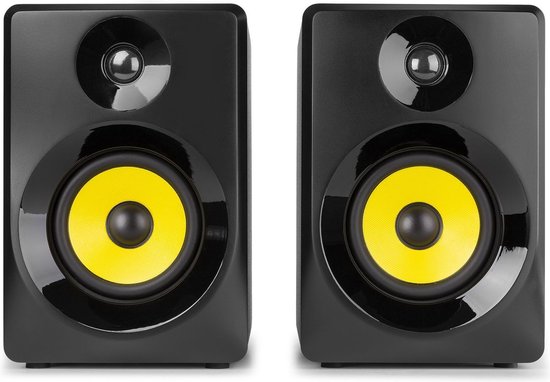
Minimum frequency: 80 Hz
Maximum frequency: 20,000 Hz
Tweeter Diameter: 1 inch
Built-in amplifier: With built-in amplifier (active)
Total output power: 60 W
Studio monitor type: 2-way
3. Hercules DJ Monitor 42 Duo Pack

Minimum frequency: 60 Hz
Maximum frequency: 20,000 Hz
Tweeter Diameter: 1 inch
Woofer Diameter: 4 inch
Built-in amplifier: With built-in amplifier (active)
Total output power: 80 W
Studio monitor type: 2-way
4. Monitor speakers

Minimum frequency: 70 Hz
Maximum frequency: 20,000 Hz
Tweeter Diameter: 1 inch
Woofer Diameter: 5 inch
Built-in amplifier: Without built-in amplifier (passive)
Total output power: 200 W
Studio monitor type: 2-way
5. Studio monitor set
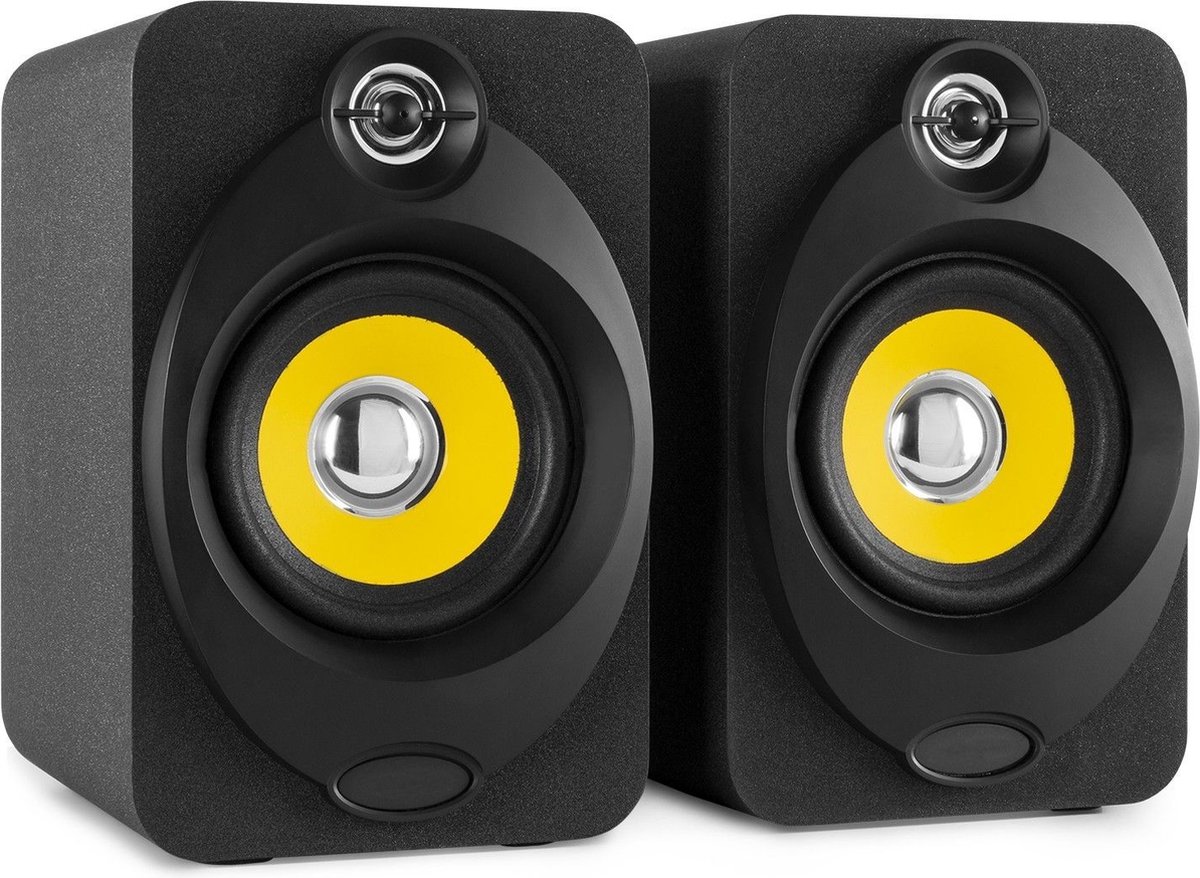
Minimum frequency: 60 Hz
Maximum frequency: 20,000 Hz
Tweeter Diameter: 1 inch
Woofer Diameter: 4 inch
Built-in amplifier: With built-in amplifier (active)
Total output power: 80 W
Studio monitor type: 2-way
Frequently asked questions about studio monitors
🔊 What is the difference between active and passive studio monitors?
An active studio monitor has a built-in amplifier that supplies the monitor with power. A passive studio monitor does not have this and must get its power from an external amplifier.
📏 How many inches should a studio monitor be?
In general, a 4 to 6 inch monitor is recommended for small spaces or home studios. Larger rooms require a more powerful and fuller sound and a 6 to 10 inch monitor comes into its own.
🔌 How do you connect a studio monitor?
You can easily connect your studio monitor to your computer with a USB or 3.5 mm connection. When using, for example, an XLR or TRS connection, the intervention of an external sound card is required, but this also immediately improves the sound quality.
❓ Choose 2-way or 3-way studio monitors?
2-way monitors are a popular choice in music production. They provide a good sound reproduction and do not need the detailed character of the 3-way variant. Most people listen to music through headphones or a stereo setup.
3-way monitors provide more detailed sound than a 2-way monitor. This is suitable for producing and mixing film music, for example, where every detail counts.
🔉 Do I need a subwoofer?
In most cases, you don’t need a subwoofer when producing music. The majority of listeners play music over a stereo set-up or headphones.
Do you mix sound for TV or film? Then a subwoofer is recommended. These are usually 5.1-channel and intended to be played by a surround set.
Which studio monitor should I buy?
That’s entirely up to you and your budget; everyone is unique. What I do have for you is a handy table with – in my opinion – the most important specifications of the best studio monitor. That way you make the best choice!
Conclusion
The best studio monitors are essential for your music productions. With a natural sound, you can spot every unevenness in the music and your productions will sound fantastic over any type of speaker.
In this article you were presented with an explanation of the most important specifications of a studio monitor. Hopefully you are now a lot wiser for your search! Remember: one of the first choices you have to make is whether you want a passive or active set!
Which studio monitor do you have in mind? Please let us know in the comment box below.